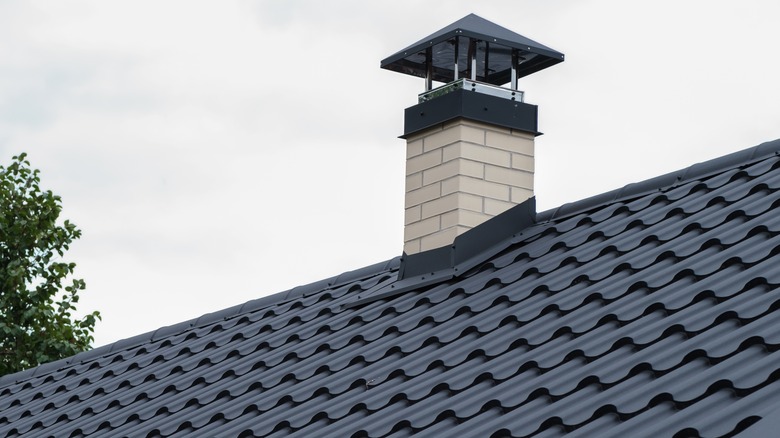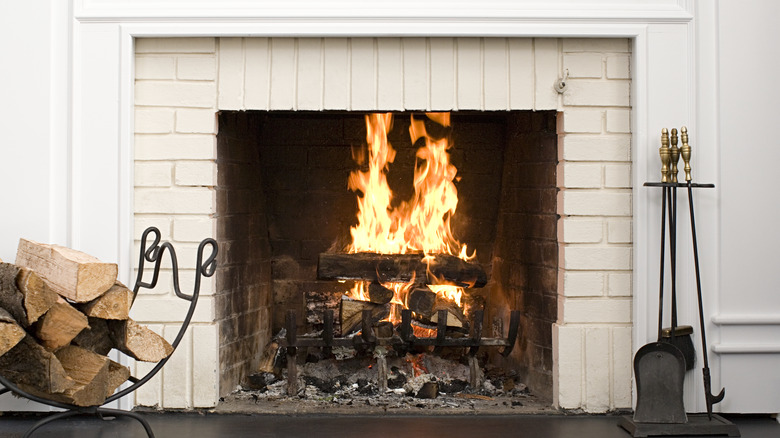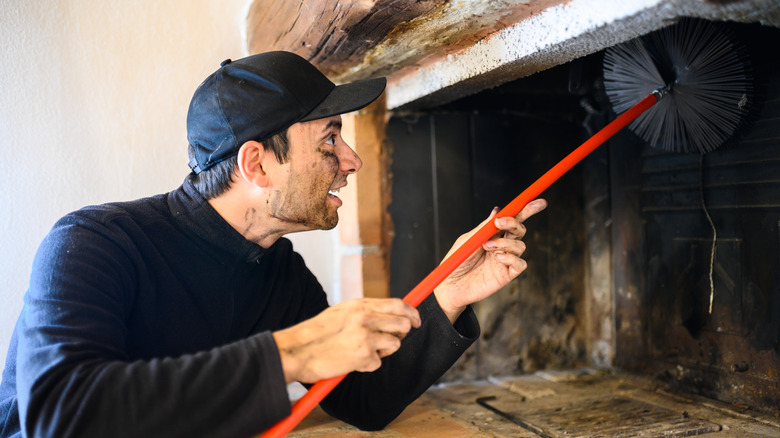What Is A Chimney Flue And Why You Need One
Knowing about chimney flues is crucial if you're looking to install a fireplace in your home or are about to use a wood stove for the first time. Chimney flues are the passages inside a chimney that direct the smoke up and out. Flues are generally made of clay, steel, or concrete to protect the brick walls of the chimney. They also prevent smoke from leaking into your home, and if a fire were to break out in your chimney, the flue would help to keep it from spreading to the rest of your home.
Chimney flues are made to be smooth, which allows the smoke to make its way out of the chimney more efficiently, and are required to hold up in temperatures over 1800 degrees Fahrenheit. There are also liners inside the flue, which add further protection. The liners can be made of clay, which is less expensive but more prone to cracking, or steel.
Why you need a chimney flue
Chimney flues are essential to keep you and your home safe when using a fireplace or wood stove. Without a quality flue and liner, smoke and gasses could seep through the walls of your chimney, filling your home with toxins. Wood fires, while they can make your home extra cozy during cold winter months, produce carbon monoxide, formaldehyde, benzene, and other harmful fumes in their smoke, so it's essential to ensure your flue is properly maintained. The toxins in smoke can also wear down your chimney, but the flue protects the brick and mortar from damage.
One of the most important reasons for a flue is containing chimney fires. With time and use, soot and creosote, an oily, flammable substance, will begin to line the walls of your chimney and could result in a chimney fire. In extreme chimney fires, the heat can be enough to crack the flue and allow the fire to spread, so make sure to have your flue cleaned and inspected regularly.
There is usually a damper at the top or bottom of the flue, which allows you to close off your chimney when it's not in use. While some older homes don't have a damper, getting one helps prevent outside debris or rain from entering your chimney. Dampers should remain open during fires until all the embers have stopped burning. Otherwise, the smoke will not be able to exit the flue.
Cleaning and repairing a flue
Chimney flues should typically be inspected every year. If you don't want to hire a chimney sweeper to clean your flue, you can clean it yourself. If your flue is clay, you'll want a wire brush; if it's metal, you'll need a polypropylene brush. The brush should be slightly larger than the flue and can clean the chimney from the top (you'll need to be on the roof for this) or from the inside. When starting from the top, you'll need to seal off your fireplace to prevent the soot from getting into your house, but when cleaning from the inside, the soot can be vacuumed from the fireplace. While you may want to do this job yourself to save some money, it can be risky and messy.
If your flue becomes damaged, you can have it relined with either rigid or flexible steel that is easily replaceable. While relining with steel is the simplest option, you can also pour concrete to reline your flue. This is especially beneficial for older homes, as it will help strengthen the chimney.
When you're ready to cozy up by the fire next winter, ensure your chimney flue is clean and free from cracks to keep your family and home safe.


